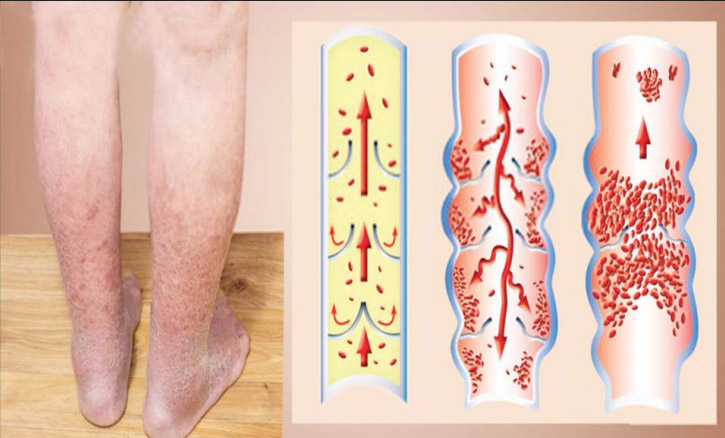Dr Pankaj Goel
For proper functioning of all body organs, a continuous supply of fresh oxygenated blood is essential. This is made possible by the circulatory system. It consists of a network of pipes (arteries) which supply the fresh blood to every part, and veins return the oxygen depleted blood back to the heart and lungs to be enriched with oxygen again.
A similar system exists in our legs too. In the legs there are superficial and deep veins. The deep veins drain the blood from the legs back to the heart. Since this blood has to travel up against gravity, the calf muscles act as pumps to push it back to the heart. For proper functioning of the leg an unobstructed supply and drainage is essential.
Several diseases can cause clots to develop in the deep veins- Deep vein thrombosis or DVT. This may be because of a defect in the Blood- which develops a tendency to get thicker and clot more. It may be because of a genetic effect, medicines.
Vein- inflammation or infections of vein walls make it rough and more prone to develop clots.
Stasis- or prolonged bed rest. Since calf muscles are inactive, blood stagnates in the calf and leads to clot formation. This is commonly seen after major surgeries especially hip and knee ortho surgeries.
Usually this disease presents as a sudden pain in the calf region with subsequent swelling and redness of the limb (acute DVT). If not treated at this stage, the clot solidifies with persistent swelling, pain and development of non healing wounds on the leg (Chronic DVT). In severe cases it may lead to gangrene requiring amputation.
The treatment starts with early diagnosis. A simple doppler ultrasound of the leg is enough to confirm diagnosis. Blood thinning injections and later tablets are the mainstay. In certain cases, direct infusion of clot busting medicines and even mechanically removing clot is required. Blood thinning medicines are continued for at least 3 months.
The main risk of DVT lies with pulmonary embolism. In some cases clots from the leg veins can break and lodge into the arteries of the lungs (pulmonary arteries). Acute pulmonary embolism is a life threatening condition. Patients may just drop dead. Those who survive, may develop severe breathlessness and heart failure. Urgent clot busting medicine injection or mechanical clot suction is required. Those who survive may continue to be breathless as clot solidifies on the lung arteries. This condition is called chronic thrombo embolic pulmonary hypertension.
Suitable subset of patients with symptomatic CTEPH can be treated with surgery( PTE). It is an open heart surgery using cardio-pulmonary bypass techniques. The pulmonary arteries are opened and the obstructing thrombus is removed thus opening up the circulation. The procedure is technically challenging but the results are gratifying. It is a challenging procedure with only few centers in the world have the expertise.
Happy to inform you that we are now successfully doing this procedure at our unit.
(The author is Cardiac Surgeon IVY hospital Amritsar)
Trending Now
E-Paper


